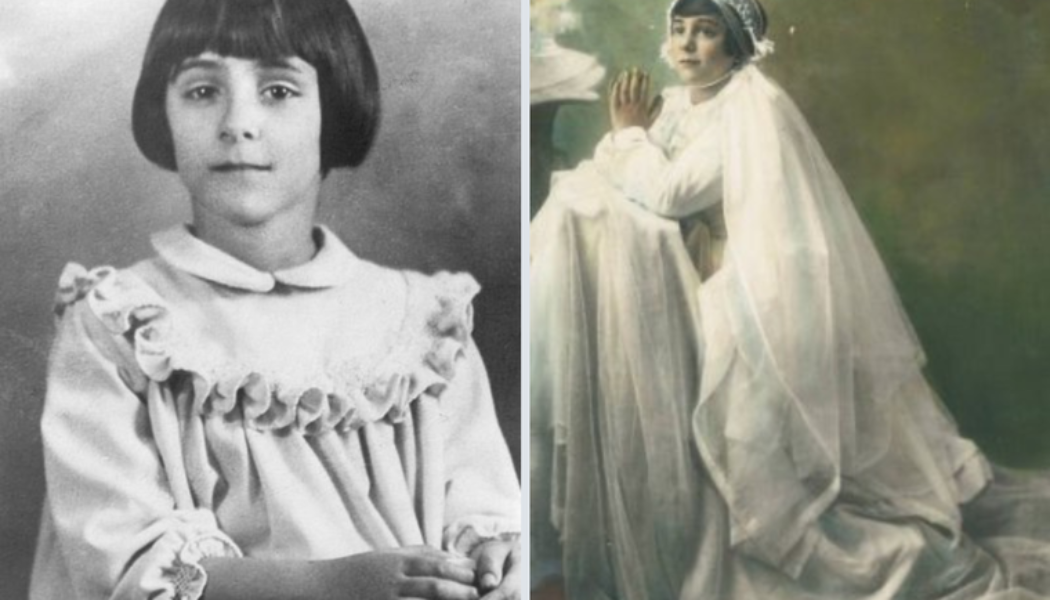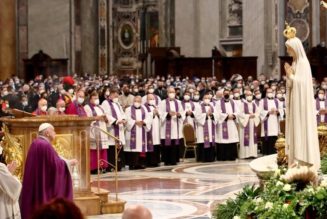
On July 3, the Church marks the feast of St. Thomas the Apostle, whose conversion from doubt to faith after the Resurrection led to the greatest confession of Christ’s divinity in sacred Scripture. After the Risen Jesus appeared to him and invited him to put his fingers into the wounds of his hands and place his hand in Jesus’ pierced side, the formerly doubting disciple simply cried out, “My Lord and my God!”
That exclamation has become one of the most common aspirations of Catholics during Mass during elevation of the Sacred Host and Precious Blood immediately after the consecration. Thomas’ conversion and awestruck confession are also what the Church in the United States is hoping will happen on a wide scale during the ongoing Eucharistic Revival.
The Church is being called to convert from a situation of theological and practical doubt — in which seven of 10 do not profess faith that Christ is really, truly and substantially present in the Eucharist and five of six Catholics skip Mass on the Lord’s Day — to one in which the Church will be able to proclaim in body language with reverential unison, “My Lord and my God!” to Christ present on the altar, in the tabernacle and in the monstrance.
The Eucharistic Christ invites us not merely to penetrate his wounds with our fingers and hands, but to enter into a life-changing communion with him as we permit him to enter fully into us and heal our wounds. He invites us all, as he said to Thomas in the Upper Room, not to “going on unbelieving, but believe.”
The feast of St. Thomas is an occasion to pray that all disciples, whether doubting or not, come to adore the Lord like the converted and faithful apostle.
On July 3, we also mark another great Eucharistic confessor, although not yet as well known.
Antonietta “Nennolina” Meo died of bone cancer at 6 1/2 years old in 1937 in Rome. In her few years on earth, however, she lived the Christian life with heroic virtue, as Pope Benedict XVI declared in 2007, when he proclaimed her “Venerable.” Three days later, he said in an audience that she had left all Christians, young and old, “a shining example” that “shows that holiness is for all ages: for children and for young people, for adults and for the elderly.” She “reached the peak of Christian perfection that we are all called to scale; she sped down the ‘highway’ that leads to Jesus.”
The highway that leads to Jesus was a Eucharistic life, in which she sought to conform her whole existence to her Lord and God present on the altar.
This showed itself fundamentally in two ways.
The first was a burning desire to receive Jesus in Holy Communion. When she was 5, already suffering from the bone cancer that would lead first to the amputation of her leg and then would metastasize to her hand, foot, throat, mouth and head, she longed to receive her first Holy Communion. She got her wish on Christmas 1936, just after her sixth birthday.
In preparation, she did catechetical lessons with her mother each night, received her first confession, and began to write, first with the help of her mother and then on her own, a series of moving letters to Jesus, God the Father, the Holy Spirit and the Blessed Mother in which she described her longing.
On Sept. 15, 1936, she penned, “Dear Jesus, today I am going for a walk and going to the sisters to tell them that I want to make my first Communion at Christmas. … Jesus, come soon into my heart, so that I can hold you tight and kiss you!”
She would dictate or write such letters before bed and then tuck them under the statue of the Baby Jesus in her room so that he could read them while she was sleeping or help deliver them to their intended recipients.
As Christmas drew near, the intensity of her longing grew. Counting down the days, she wrote that she was preparing within her a “beautiful, soft, soft little crib, dear Jesus, so that you can rest well [in] my heart.”
The night of her first Communion, she knelt for an hour with hands folded in silent adoration, despite the pain that her primitive prosthetic leg was causing her.
She wrote soon after, “Dear Jesus in the Eucharist, I am so very, very happy that you have come into my heart. Never leave my heart; stay for ever and ever with me. Jesus, I love you so. I want to let myself go in your arms and do what you will with me.”
Her Eucharistic desire continued to grow as Jesus in the Eucharist really became the center of her life. “Dear Jesus in the Eucharist,” she wrote, I love you so much. … I know that you suffered a lot when you were little, and I want to go to Mass every Sunday where the sacrifice of the cross is renewed and where you make an even greater sacrifice to enclose yourself in the Most Blessed Sacrament of the altar. Dear Jesus, I will come to receive you every Sunday, but I would like to receive you every day, but Mom does not take me there.”
She also lived a Eucharistic life in her approach to the enormous suffering she experienced as a result of osteosarcoma.
Her tomb rests in the Roman Basilica of the Holy Cross, dubbed “in Jerusalem” because it was the former palace of St. Helen, who brought several relics of the Lord’s Passion from Jerusalem to Rome together with dirt from the Holy Land that she used as the foundation for the chapel she constructed to house the relics, where they remained for 1,600 years.
In 1930, a new chapel was made off to the side of the basilica, but as soon as one enters the ramp leading to the chapel, there is a small room with Nennolina’s sarcophagus, which one can’t miss when returning from venerating the relics.
She was placed there not just because she made all her sacraments at the basilica, had her funeral Mass there, and was loved by the Cistercians in charge, but because she had lived a life of intense communion with Jesus’ passion, pondered in the relics, and entered into by means of the Eucharistic sacrifice.
Nennolina demonstrated a profound and precocious comprehension for the meaning of redemptive suffering. After her leg was amputated, she wrote to Jesus, “I’m not saying to give me back my leg. I gave it to you!” and told her mother why she gave it: “You know, Mom? I offered my leg to Jesus for the conversion of poor sinners.” When others kindly told her they were praying for her to get better, she asked them rather to pray that she do God’s will. “I want to stay with him on the cross because I love him.” When her father was worried about how much pain she was in, she told him, “Dad, the pain is like fabric: The stronger it is, the more value it has.”
When St. Pius X in 1910 lowered the age of first Communion to the age of discretion, he predicted, “There will be saints among the children!”
If Nennolina is eventually canonized, she will become the youngest non-martyred saint in Church history.
Through Holy Communion, Jesus seeks to make us holy, and children are often able to appreciate the reality of the holiness of the Eucharist more easily than adults. It’s one of the reasons why I have regularly used Nennolina in parish work and beyond to inspire first communicants, encouraging them to prepare little presentations on her, to read some of her Eucharistic letters aloud in class, and to imitate her longing.
As Pope Benedict said in 2007, however, she is a “shining example” not just for children but for “adults and the elderly,” pointing out to every Catholic the Eucharistic interstate to Christian perfection.









